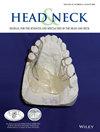Prognosis and Phenotypes of Advanced Head and Neck Carcinoma Associated With Hypercalcemia
Abstract
Purpose
Hypercalcemia is the most common metabolic disorder in cancer, affecting 10%–20% of patients with advanced malignancies, including squamous cell carcinoma of the head and neck (HNSCC), though its prognostic significance remains poorly studied. This study aimed to evaluate the prognostic impact of hypercalcemia at diagnosis in patients with locally advanced or metastatic HNSCC and to explore underlying mechanisms and treatment options.
Methods
We conducted a bicentric, retrospective analysis of patients diagnosed between 2015 and 2021, including those with locally advanced or metastatic HNSCC undergoing chemotherapy. Hypercalcemia at diagnosis was defined as an albumin-corrected serum calcium level > 2.6 mmol/L, equivalent to 10.4 mg/dL. The primary outcome was overall survival (OS), compared between hypercalcemic and non-hypercalcemic patients using multivariate analysis. Progression-free survival (PFS), along with clinical, biological, and therapeutic characteristics were also evaluated.
Results
The study included 286 HNSCC patients, 225 (78.7%) of whom were male. Hypercalcemia incidence was 17.8%. The median OS for the cohort was 7.9 months (95% CI = 6.8–10.6). Hypercalcemic patients had a median OS of 5.9 months (95% CI = 3.8–7.9), compared to 9.1 months (95% CI = 7.3–11.7) in non-hypercalcemic patients (p = 0.002). In multivariate analysis, hypercalcemia was associated with worse OS (HR = 1.73, 95% CI = 1.17–2.56, p = 0.006). Median PFS was 4.3 months (95% CI = 3.6–5.5) for all patients. Hypercalcemic patients had a significantly shorter PFS of 2.4 months (95% CI = 1.9–4.8) compared to 4.7 months (95% CI = 3.8–5.9) in non-hypercalcemic patients (p = 0.0025). Multivariate analysis identified hypercalcemia and oral cavity tumors as negative prognostic factors, with HRs of 1.76 and 1.86, respectively. Bone metastasis rates were similar (17.6% vs. 16.2%), but local osteolysis was significantly higher in hypercalcemic patients (54.1% vs. 27.2%, p = 0.003). Bisphosphonates were administered to 38% of hypercalcemic patients.
Conclusion
In this study, hypercalcemia was an independent negative prognostic factor of survival and rapid progression in patients with locally advanced or metastatic HNSCC.


 求助内容:
求助内容: 应助结果提醒方式:
应助结果提醒方式:


